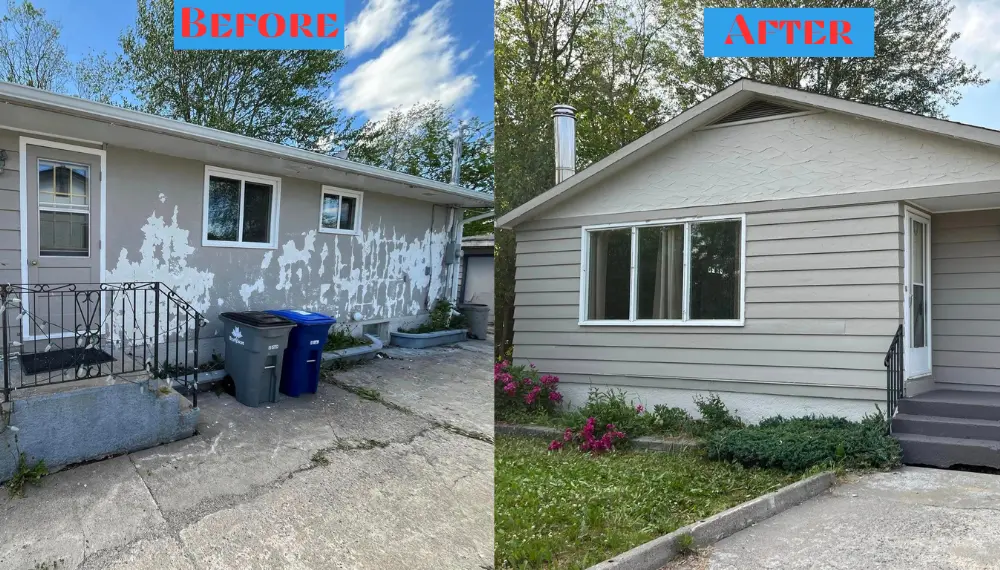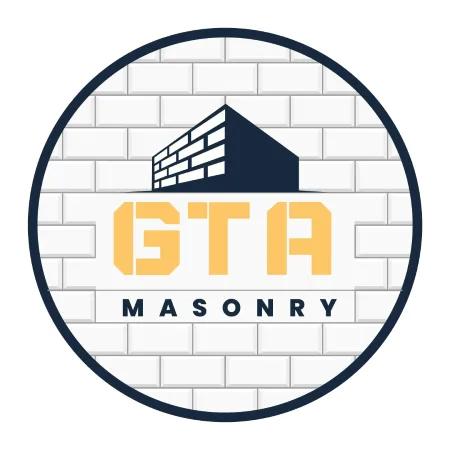In Hamilton, Ontario, specific costs may vary, with typical prices falling within this range, influenced by local labor rates and material costs.
On average, homeowners can expect to pay between $3 to $10 per square foot for parging, which translates to a total cost ranging from $3,000 to $10,000 for a 1,000-square-foot area.
Contact Us For Free EstimatesWhat is Parging and Why it is neccessary?
Parging is a thin coat of mortar applied to the exterior foundation walls of your home. This layer serves as both a protective and aesthetic cover, shielding the walls from moisture and weather damage while providing a smooth, uniform appearance. It’s often used to cover rough surfaces, cracks, or uneven areas in the concrete or masonry.
The importance of parging cannot be overstated. Not only does it protect your home from water infiltration and potential structural damage, but it also enhances curb appeal. A well-parged wall is less likely to crack or deteriorate, ensuring the longevity of your foundation.
Factors Influencing the Cost of Parging
Several factors contribute to the overall cost of parging. These include the size and condition of the area to be parged, the materials used, the complexity of the job, and the cost of labor in your region. Here’s a breakdown of each factor:
1. Area Size and Condition
The size of the area you need to parge is the most significant factor in determining cost. Larger areas naturally require more materials and labor, leading to higher costs. Additionally, the condition of the wall plays a crucial role. If the wall has existing damage, such as cracks or significant unevenness, it will require more preparation work before parging can begin. This extra work, which may include cleaning, filling cracks, or even repairing damaged sections, can increase the overall cost.
2. Materials Used
The type of material used for parging is another critical cost factor. Common materials include traditional cement, acrylic, and lime-based mixtures. Each material has its own cost range, with traditional cement being the most affordable and acrylic mixtures being on the higher end. The choice of material can also impact the durability and appearance of the finished product.
- Cement-Based Parging: Typically costs between $3 to $6 per square foot.
- Acrylic Parging: Can range from $4 to $10 per square foot.
- Lime-Based Parging: Falls within a similar range to cement, though it is often chosen for its breathability and flexibility.
3. Labor Costs
Labor is a significant portion of parging expenses. The cost of labor varies by location, with urban areas generally seeing higher rates than rural areas.
On average, labor costs for parging can range from $30 to $60 per hour. The complexity of the job can also affect labor costs. For instance, if scaffolding is required for higher walls or if there are many intricate areas to parge, labor costs will increase.
4. Preparation and Additional Work
If your foundation walls are in poor condition, additional work may be required before parging can begin. This preparation might include power washing, removing old parging, or even minor masonry repairs. The cost of this preparatory work can add a significant amount to the total project cost.

Average Cost of Parging Per Square Foot
On average, Parging cost for homeowners in Stoney Creek is between $3 to $10 per square foot for parging, depending on the factors mentioned above. For a typical 1,000-square-foot foundation, this translates to a total cost of $3,000 to $10,000. However, this is a broad range, and actual costs can vary based on specific circumstances.
Estimating Costs for Different Project Sizes
- Small Projects (300-500 sq. ft.): Expect costs to range between $900 to $5,000.
- Medium Projects (500-1,000 sq. ft.): Costs typically range from $1,500 to $10,000.
- Large Projects (1,000+ sq. ft.): Costs can exceed $10,000 depending on the area size and condition.
Parging Costs in Hamilton, Ontario
In Hamilton, Ontario, the cost of parging typically falls within the average national range, with prices ranging from $3 to $10 per square foot. However, due to local labor rates and the availability of materials, homeowners in Hamilton might experience slight variations in pricing. It’s advisable to obtain multiple quotes from local contractors to ensure competitive pricing.
DIY Parging vs. Hiring Professionals
Some homeowners may consider a DIY approach to save on costs. While DIY parging is possible, it requires a significant amount of skill and knowledge to achieve a durable and aesthetically pleasing result. Mistakes can be costly, leading to potential structural damage and the need for professional repairs.
Pros of DIY Parging
- Cost Savings: By eliminating labor costs, you can save a significant amount of money.
- Personal Satisfaction: Completing the project yourself can be rewarding.
Cons of DIY Parging
- Skill Requirements: Parging requires knowledge of masonry techniques and materials. Mistakes can lead to a poor finish or even structural issues.
- Time-Consuming: Parging a large area is labor-intensive and time-consuming.
- Potential for Errors: Without professional expertise, you may encounter issues such as improper adhesion, cracking, or uneven surfaces.
Hiring Professionals
Hiring professionals ensures that the job is done correctly and efficiently. Experienced contractors have the necessary skills and tools to handle any complications that may arise, ensuring a high-quality finish that will last for years.
Maintenance and Longevity of Parging
Parging, when done correctly, is a long-lasting solution that requires minimal maintenance. However, like any exterior finish, it is subject to wear and tear from the elements. Regular inspection of your parging for cracks or signs of deterioration is important to address minor issues before they become significant problems.
Tips for Maintaining Parging
- Inspect Regularly: Look for any cracks, chipping, or discoloration.
- Repair Small Cracks Immediately: Use a patching compound to fill small cracks before they worsen.
- Keep the Area Clean: Power wash your parging periodically to remove dirt and prevent the buildup of mold or algae.
- Sealant Application: Applying a water-resistant sealant can enhance the longevity of your parging by protecting it from moisture infiltration.
Conclusion
Parging is a valuable investment in the appearance and durability of your home. While costs can vary based on several factors, understanding these can help you budget effectively for your project. Whether you choose to hire professionals or undertake the task yourself, the key is to ensure that the job is done correctly to enjoy the benefits of a well-parged wall for years to come.
